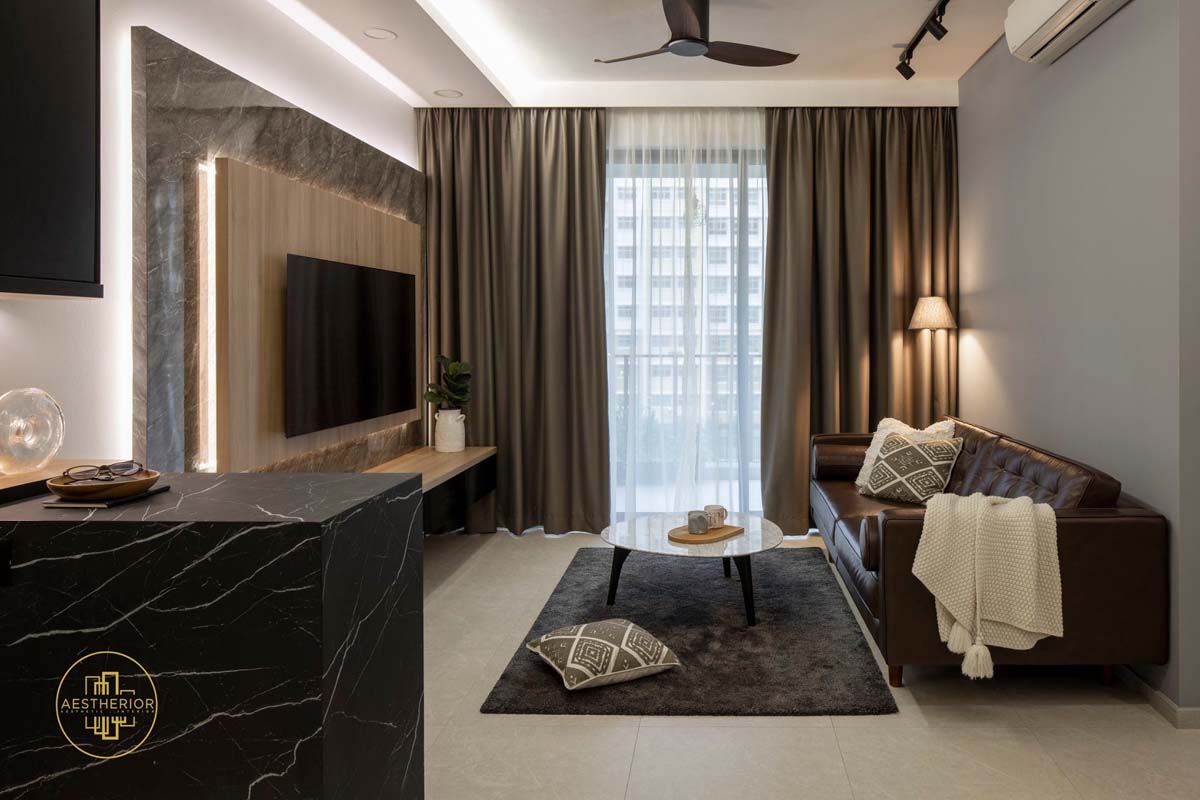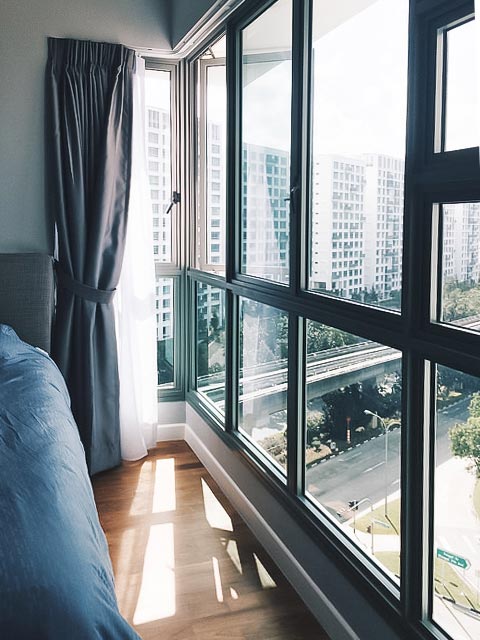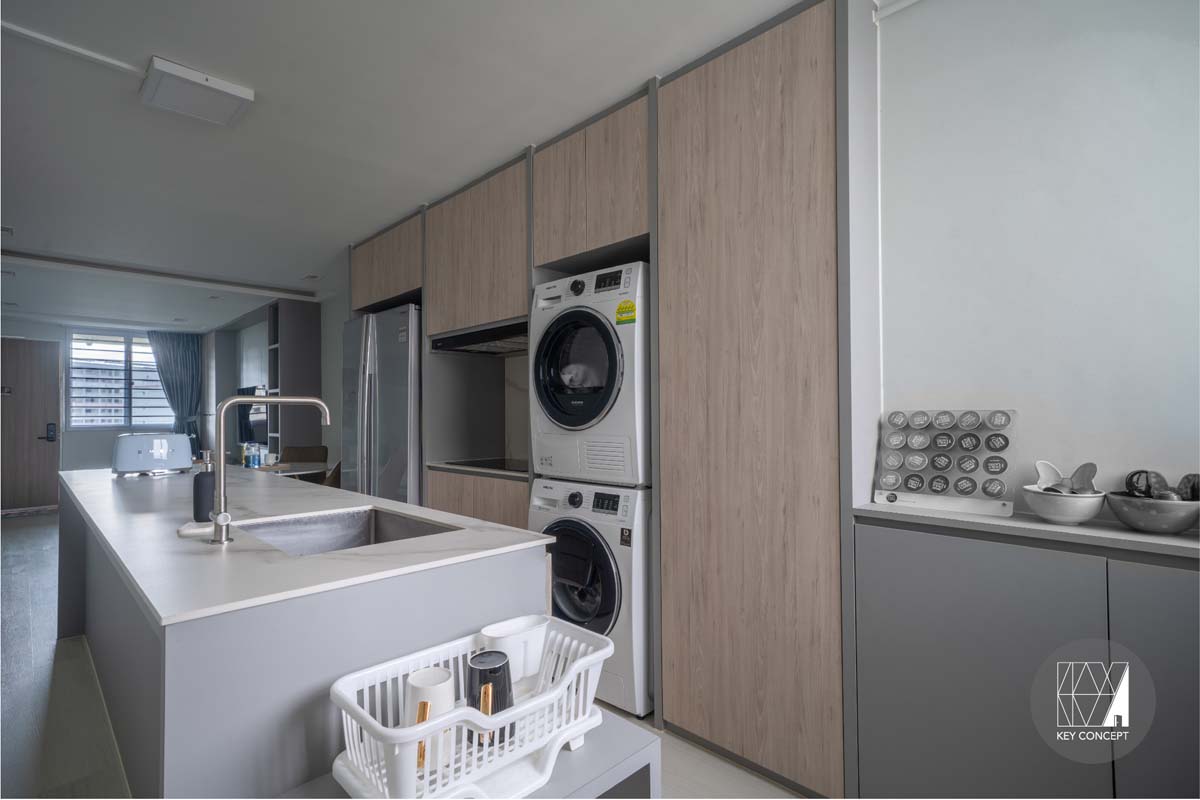8 ways to keep your home cool without air-conditioning


Sweating buckets while at home? With electricity prices on the rise, now probably isn’t the best time to turn the air-conditioning on. Instead, keep yourself cool and your home cool with these more energy- and cost-efficient methods.

Sunlight, while good for physical and emotional health, can also invite a lot of heat and warmth into your home.
Invest in black-out curtains or blinds that keep it out completely and draw them during the hottest parts of the day (usually between late mornings to early evenings).
Choose ones that are light in colour since light colours reflect light while darker hues absorb light. If you do need a bit of sun, open the windows that don’t face the sun directly e.g. not facing the west directions.

Prefer to preserve your view? Consider getting window solar films that you can stick onto your windows. These are designed to either reflect or absorb heat without blocking the view.
To check how much heat or light a solar film can block, ask suppliers about the total solar energy rejected (TSER).
TSER values comprise the rejection of three types of solar heat: Infrared rays, UV light and visible light.
ALSO READ: 11 overlooked things at home that are potentially making you sick
If you’re making your comparisons, make sure that you are comparing like for like — a higher value TSER may not always mean the film is better at blocking out heat.
Check that you’re comparing solar films with the same visible light transmission (VLT) — the amount of light that can be filtered through, which determines how dark or bright your room will be.

High humidity (moisture in the air) can make you feel warmer, since it reduces the ability for sweat to evaporate from your body. And when sweat cannot evaporate effectively, your body is unable to cool down.
In Singapore, this is a particularly significant problem as the humidity in our environment is generally quite high.
If you find yourself unable to cool down at home or you notice high instances of mildew or mould growing around, you might need to bring down the humidity levels in your home.
Consider investing in a dehumidifier, which helps to extract water or moisture from the air. Some models, like the DE5205/30 from Philips, come with air purification features as well.

One of the most humid areas of the home is the bathroom, as it’s often wet. Coupled that with hot showers and all that hot, humid air is going to enter your home to make it feel not so cool.
To counter this, get a bathroom exhaust fan that will help suck out all the damp air out of the bathroom to the outside, helping to keep your space cool and dry.

Green spaces often feel a lot cooler since plants absorb heat naturally (for photosynthesis). For folks with green thumbs, consider decking out your space with them.
Choose tall plants with big, generous leaves and ones that prefer plenty of sunlight so you can locate them near the window to provide extra shade. Sun-loving plants include aloe, snake plant and the popular monstera plant.

Appliances give off a lot of heat, contributing to the higher temperatures in your home. On warmer days, you might want to use certain appliances during periods when temperatures are cooler like in the mornings or in the late evenings.
Appliances like the dishwasher, washing machine, dryer and the oven tend to run on for a period of time and can significantly increase the temperature in your home.
Think about hanging your clothes out to dry naturally in the sun during the day or use cooking appliances that retain heat rather than give off heat such as a thermal cooker.

One of the easiest ways to cool down your home? Cross ventilation.
To ensure cross ventilation in your home, open up windows and doors that are located opposite of each other within your space.
Make this even more effective by switching on your fans to help direct the air. Ceiling fans, in particular, are suited for moving air around.

Avoid silk or other polyester material when it comes to choosing bedding material since these trap heat and moisture (sweat).
Go with materials like cotton and linen instead, which are more breathable and allow heat to dissipate, leaving you feeling cool throughout the night.
For cotton sheets, you will want to watch the thread count — don’t go for anything higher than 200 as sheets with too high a thread count will make it dense and therefore less breathable.
Weave type matters too for cotton bedding. Percale weave will feel more breathable than sheets that are sateen woven.
This article was first published in Renonation.